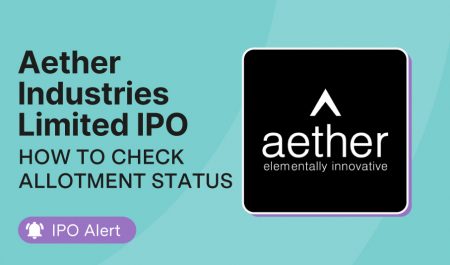The state-owned insurer Life Insurance Corporation of India (LIC) is slowly inching its way towards making its Initial Public Offering [IPO] launch a reality. What will be India's largest listing is likely to take place in the current fiscal year. The merchant bankers are expected to be appointed shortly, following which the government will issue the Draft Red Herring Prospectus (DRHP) and begin promotions to invite investors. Let’s look into the latest details so far and what you need to know to make an informed investment decision.
To begin, here are some facts.
- LIC is India's second-largest financial services institution with a market share of 68.74% in terms of total first-year premium and 75.90% in new business policies.
- The company employs more than 1.14 lakh staff and has assets under management [AUM] of ₹15 lakh crore.
- It is the only public sector company that deals in life insurance with approximately 13.53 lakh individual LIC agents [as of 31st March 2021].
- The Insurance Regulatory and Development Authority (IRDAI) states that LIC sold over 2.19 crore policies in FY20, achieving the highest number of policies for the last six years.
- It has a claim-settlement ratio of 96.69% for the year FY20.
- LIC is likely to get approximately ₹75,000 crore over the next two decades as a renewal premium, even on a conservative basis.
- As per corporate shareholdings filed for 30th June 2021, LIC publicly holds 20 stocks with a net worth of over ₹70,407.8 crore.
- As of 31st March 2020, LIC's total investment portfolio stands at ₹33.7 lakh crore, almost four times the combined figure for private insurance companies.
- The Corporation reported an increase of around 39.01% in its group new business premium in the FY20, i.e., over 1.27 lakh crore compared to over 0.91 lakh crore in FY19.
What we know so far
On 15th July 2021, the government kickstarted the process for LIC disinvestment. It invited bids from merchant bankers and legal advisors to initiate the proposed initial share sale.
According to the Department of Investment in Public Asset Management, approximately ten merchant bankers and one legal firm will assist and advise on the stake sale. The government is also working on consolidating the accounts of LIC and its subsidiaries:
- LIC Pension Fund Ltd
- LIC Cards Services Ltd
- IDBI Bank Ltd.
This step is regarded as a prerequisite to filing the DRHP. Given the company's mammoth size, the government may choose to sell 5 to 6% through the first round of IPO followed by a similar, second IPO.
The Importance of LIC IPO for the government
In Budget 2021, the government laid out a disinvestment target of ₹1.75 lakh crore. As much as ₹1 lakh crore could be raised by selling government stakes in financial institutions, such as LIC and state-run banks. The government currently owns 95% stake in LIC and may list anywhere between 5 to 6% based on the embedded value.
The remaining ₹75,000 crore could be obtained by disinvesting the government’s stake in public sector firms. That's why the LIC IPO is vital to meet the disinvestment target for FY22.
According to the new listing norms laid down by the Securities and Exchange Board of India (SEBI), companies that have a size of over ₹1 lakh crore are required to achieve at least 10% public shareholding in two years and at least 25% within five years from the date of listing.
In this regard, the government will divest its stake in LIC gradually and command a significant premium in the subsequent IPO. As it continues to reduce its stake in tiny proportions in the next five years, the government can ensure it meets regulatory requirements and command premium.
Latest developments
- Twenty-seven legislative changes made to the Life Insurance Corporation Act 1956 have been put into effect. The spate of amendments to the LIC Act include:
-Establishing a board with independent directors in line with listing obligations.
-Enhancing authorized capital to ₹25,000 crore segregated into 2,500 crore shares of ₹10 each.
-Appointment of an audit committee to appoint auditors, declare dividends and issue bonds shares.
- No alteration in the legal position of the Corporation to turn it into an organisation/company.
- LIC will continue to be governed by the LIC Act.
- The Centre will hold at least a 75% stake in LIC for the next five years after the IPO and at least 51% after five years.
Why the valuation process is delayed
Investment income gave LIC net revenues of ₹6.15 lakh crore. And that's just the intrinsic value.
LIC does not state the embedded value [EV] nor the value of new businesses. Only after investors get the EV, the market is likely to put a value over and above it, which could be one or five times.
Currently, the process of valuation is ongoing and is perceived to be a long and arduous task. That's because the government needs to consider the emotional value of LIC stock and its intrinsic value. Hence, it needs to uncover the right balance when pricing its stake level. Once the valuation is complete, the divestment size will be determined and subsequently the IPO.
What is likely to be involved in the valuation
First, LIC will need to take stock of real estate to run its business. Second, it will need to determine the surplus it has made through digitisation and transforming business models.
Real estate can be sold and taken on lease to generate new cash flows when it comes to real estate. Similarly, operational assets such as equipment, property and buildings assumed to be part of the overall business would reflect in the valuation. And since real estate can be sold at a higher value and taken on lease, thanks to its operational asset feature, the current value of future lease payments would be less than the lump sum amount raised by selling real estate.
Thus, monetising real estate assets is likely to enhance value as margins arise. While all this is speculative, valuation is an aspect that LIC will need to conduct in consultation with the government. That being said, the real test of evaluation will take place on stock exchanges.
What it means for LIC policyholders
LIC policyholders could become shareholders if the government offers 10% of the issue to them. Allowing policyholders to take part in the LIC IPO can be viewed as an exciting proposition. And hence once again, the price at which it is offered will be the only caveat.
That means, if the pricing is too steep and institutional investors do not seem too eager, the price calculation may not give the government the positive acknowledgement they seek. In addition, retail investors could be influenced by the pricing announcement.
How you could benefit as an IPO investor
With equity markets on a good run and confidence high among retail investors, you may not want to miss the chance of investing in India's largest insurer.
The LIC IPO is likely to boost India's standing in the international market and highlight its value creation prospects. By selling some of its stake, the government will receive the necessary cash infusion. At the same time, the capital markets will get to host a blue-chip stock, and LIC customers will begin to see complete transparency in LIC financial numbers—making it a win-win-win on all fronts.
The company will have to increase its focus on profitability considerably; get used to higher compliance, disclosures, and transparency; and understand investor, analysts, and market expectations. As more and more analyst reports and credible information start to assess its performance, it will further help investors make more informed decisions. More scrutiny and better accountability will, in turn, boost overall performance.
How to apply for the LIC IPO
- You can apply for the LIC IPO by linking your bank account to a UPI ID and registering with your Upstox broking account. On using your ID, you can confirm the payment on the UPI app and block the amount for allotment.
How to apply for the LIC IPO through your Upstox demat account
- You can directly apply for the LIC IPO through your Upstox demat account.
- If you are a new investor, click here to open your Upstox demat account to begin your IPO journey with LIC.
Conclusion
The LIC IPO is likely to become a template for the government's disinvestment program in the long run. It will serve as a primary step in liberating India's largest insurance company and will likely become an acid test of its determination and agility in overcoming challenges.
With the government staying as the majority shareholder, it will retain management control and help safeguard policyholders’ investment, thus making the LIC IPO an ideal investment for you to consider.



